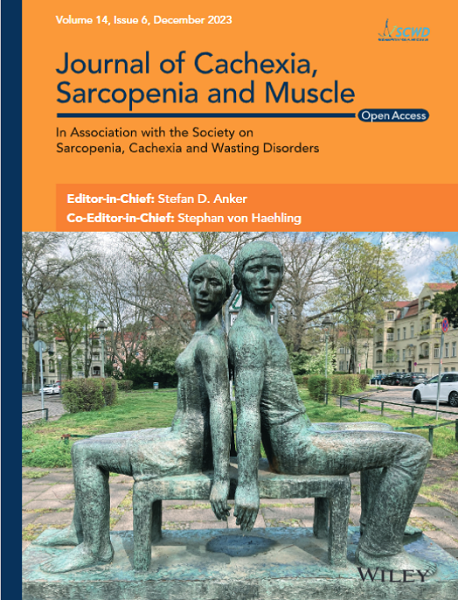Aged-Related Fibroblast Activation Protein Expression in Skeletal Muscles Evaluated by PET Imaging
Abstract
Background
Fibroblast activation protein (FAP) is prominently involved in the tumour microenvironment and tissue remodelling processes in most cancers, and its expression is also noted in normal skeletal muscle. This study aims to explore the relationship between FAP expression and age-related muscle characteristics through FAP inhibitor (FAPI) PET/CT imaging.
Methods
This retrospective analysis studied 54 patients with lung cancer (n = 27) and pancreatic cancer (n = 27) using FAPI PET/CT. Imaging-based muscle features including the mean standardised uptake value (SUVmean), skeletal muscle index (SMI) and Hounsfield units (HU) were evaluated. Age-related FAP expression in skeletal muscles was also evaluated using the Genotype-Tissue Expression (GTEx) dataset. Statistical analyses included Spearman's rank correlation and Kruskal–Wallis test, with a p-value of less than 0.05 considered significant.
Results
Analysis revealed a moderate to strong positive correlation between FAPI SUVmean and age (ρ = 0.368, p = 0.006), with older age groups showing higher muscle uptake. Within specific cohorts, the FAPI-74 group demonstrated a stronger correlation (ρ = 0.500, p = 0.008) compared to the FAPI-46 group (ρ = 0.319, p = 0.105). SUVmean also correlated negatively with muscle density (HU) (ρ = −0.298, p = 0.029), suggesting an association with higher fat infiltration. GTEx data supported these findings, showing a significant increase in FAP expression across age groups (p < 0.001), with the highest median FAP in the 70–79 age group.
Conclusions
This study demonstrates an age-related increase in FAPI uptake in skeletal muscle, correlated with changes in muscle density and fat infiltration. The role of FAP extends beyond pathology to normal muscle, indicating broader biological functions. Accordingly, FAPI PET shows promise for assessing age-related muscle health and quality.


 求助内容:
求助内容: 应助结果提醒方式:
应助结果提醒方式:


